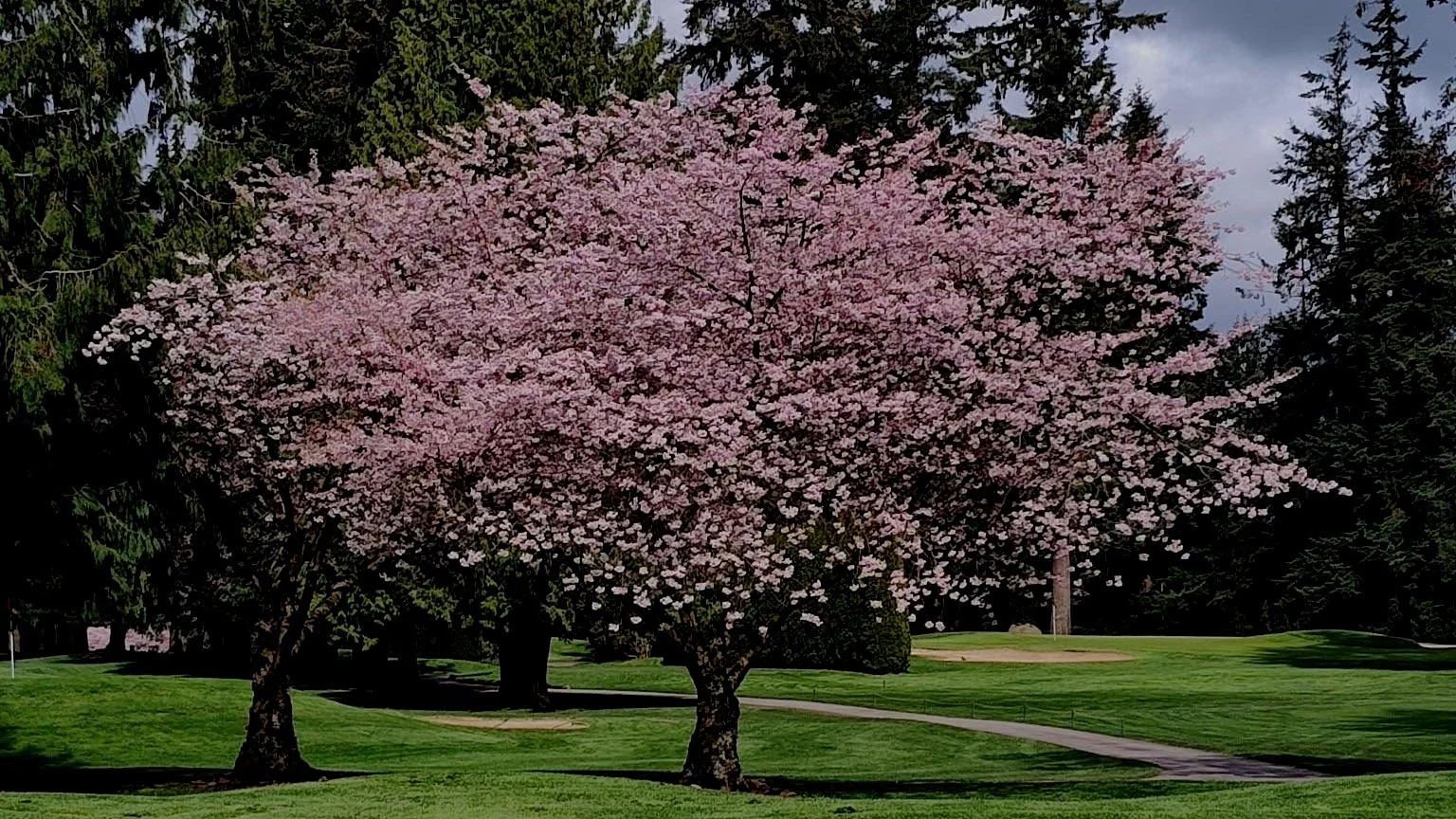Now that spring has officially sprung to life, I find myself gazing upwards and admiring flowering trees everywhere. At the garden center, driving around town, walking around my neighborhood, traversing the local golf course… it is impossible not to be captivated by the flower power Mother Nature produces each spring. We talked about crabapples a couple of weeks ago, but there are so many more trees worthy of any gardener’s admiration. This week we shall delve into ornamental cherries, specifically two species – Prunus subhirtella and Prunus serrulata – and the many named cultivars of each.
To start, let us talk about some cherry basics. These are all old-wood blooming trees, meaning that the flower buds you are enjoying now were produced last summer. I try to mention this with all plants I bring up as it dictates when one prunes. Tidying specimens up in winter may seem like a good idea, but keep in mind that it is not best for all plants. Pruning old-wood bloomers back severely may not hurt your tree, but you are essentially cutting off the majority of your flowers for the coming season. Instead, enjoy all of the flower power, let the bees do their thing, and then prune after bloom – that is the perfect rule here. Give them room to grow in sun, make sure drainage is adequate, and you will have yourself an excellent flowering specimen for decades to come.
The history of flowering cherries is a most interesting one to me. Native to Japan, they have adorned Japanese gardens for eons with their mythical spring flowers and exquisite branching. Known as “Sakura”, these trees are revered and have strong symbolism in Japanese society, representing hope and renewal. They did not make their way to the United States until 1912, when the original batch of trees was gifted to America as symbols of friendship in our nation’s capital. Believe it or not, two of these original trees are still there, and were joined by another influx of over 3,000 cherries that were added in the 1950’s. These are the specimens we still see along the Potomac, the White House, and the other monuments in the capital today. The partnership between American and Japanese botanists has thrived over the last century, originally allowing for the exchange of trees (we sent them flowering dogwoods) and now continuing through their preservation.
Flowering cherries come in many forms including weeping, more columnar (like ‘Amanogawa’ or ‘Sargents’) and the classic vase shape we think of with its spreading horizontal crown. Flowers can be white or shades of pink (depending on the variety), single or double, and many add slight fragrance. Earlier bloomers (Prunus subhirtella cvs) pop with the onset of spring. Later bloomers (Prunus serrulata cvs.) offer flowers in April to early May. The famed ‘Yoshino’ and ‘Akebono’ cherries (Prunus x yedonensis) are actually hybrids of P. serrulata - a tree widely planted across temperate gardens now around the globe. As a bonus, I must also mention the spectacular shades of gold, orange and red that ornamental cherries will turn in the fall, adding some serious autumn interest. As you consider adding a flowering cherry, keep a few things in mind…
Rootstock: Cherries are always grafted onto a stronger rootstock when propagated. I mention this because there are dwarf forms available on many. For us in the PNW this means the ‘Gisela’ rootstock, which not only reduces the size of the tree by about 40% but is also more tolerant of wet and heavier soils. Perhaps in a smaller yard, a dwarf form may be more suitable for you.
Tibetica Cherry: This is a specific form of Prunus serrulata and is often referred to as the “Birch Bark” cherry. Some cherries can be found grafted onto this trunk, which adds coppery-brown peeling bark to your specimen, providing winter interest as the tree matures.
Weeping Cherries: Around here, we most often see ‘Snow Fountain’ (single white) or ‘Flora Plena’ (double pink), both varieties of P. subhirtella. These are often smaller scale specimens in the garden, especially if they are pruned properly. If let go, they will continue to build on themselves over time and get fairly large, so again, prune after bloom is the rule to control the size.
I don’t need to remind any of you how much it rains here in spring, but I bring it up because sometimes the earlier bloomers may not last quite as long as later ones, although either type do well in our climate. One potential issue with cherries in our corner of the globe is what we call blossom blight, a fungal disease that blows around in the spring wind and rain, sometimes infecting Prunus of all kinds. This includes both fruiting and ornamental plums and cherries. If your tree bursts into flower, lasts only a couple days and then shrivels to brown, a spray may be needed to curb the problem. It is an easy disease to manage, but if left alone will kill young growth and require a serious pruning down the road to remove all of the dead wood.
If it is a larger yard specimen you are looking for, both the ‘Yoshino’ and ‘Akebono’ mentioned above are show stoppers. Some others I might suggest include ‘Kwanzan’ (a double pink later bloomer than is very popular), ‘Mt. Fuji’ (a double white later bloomer with a lovely spreading crown), ‘Royal Burgundy’ (just like Kwanzan but with purplish foliage), ‘Shirofugen’ (classic double light pink later bloomer with spreading crown) and ‘Shogetsu’ (classic larger double white later bloom with spreading crown). I hesitate to recommend early upright flavors of P. subhirtella like ‘Autumnalis’ and ‘Whitcomb’ because they bloom super early (February to March) and are more prone to the blossom blight I mentioned above. I do see them thriving here and there in local gardens, so if you try these be sure that they have both maximum sun and air circulation, and are not crowded with other tree canopies.
Not much beats a sunny spring day, filled with blue sky and flowers everywhere. As nature starts our gardening season once again, take a moment to admire the glory of spring, breathing in the beauty all around you. Be sure to stop into your local garden center and contemplate your choices with spring blooming trees. Speak with a Certified Professional Horticulturist about your needs, and allow them to not only help you find the perfect specimen but also guide you on how to care for it properly. Always remember the best time to plant a tree was twenty years ago, the second best time is today.



